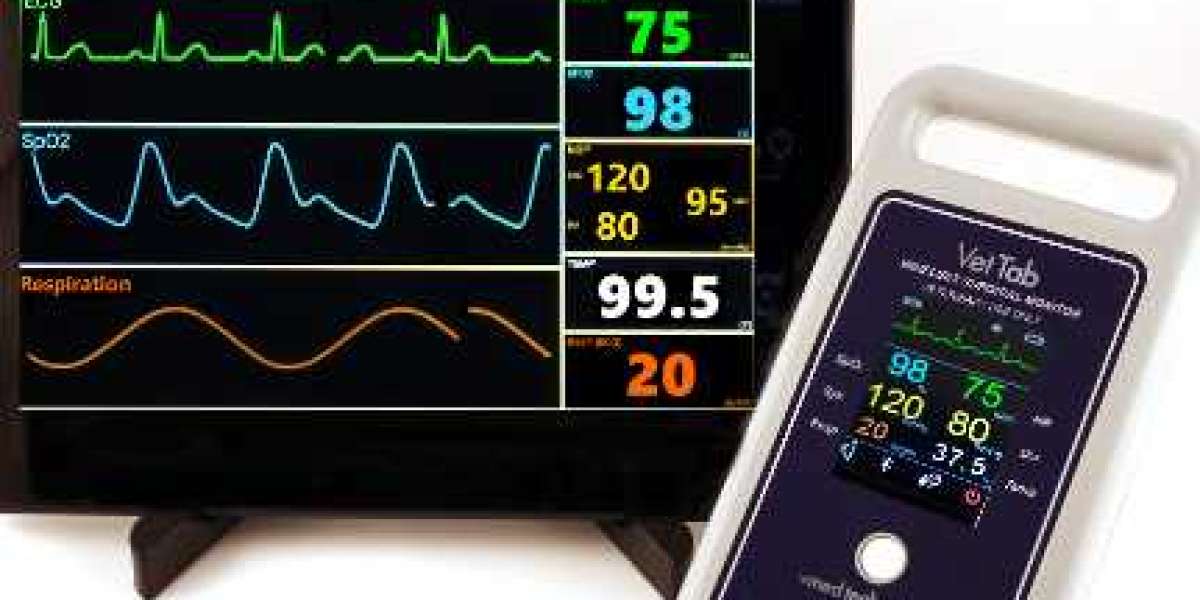As a pet owner, you want your furry friends to receive the best possible care when they are sick or injured. That's why veterinary clinics are turning to high-tech solutions to improve the quality of care they provide. One such solution is the veterinary patient monitor, a sophisticated device that can help veterinarians keep a close eye on the health and vital signs of animals under their care.
Introduction:
In this article, we will take a closer look at veterinary patient monitors, what they are, how they work, and why they are an essential tool for modern veterinary clinics. We will explore the features and benefits of these monitors, as well as their limitations and challenges. By the end of this article, you will have a better understanding of how veterinary patient monitors are improving the quality of care for animals.
What is a Veterinary Patient Monitor?
A veterinary patient monitor is a medical device that is used to measure and track the vital signs of animals. It typically includes several sensors and modules that can monitor a variety of parameters, including:
- Heart rate
- Blood pressure
- Oxygen saturation
- Respiration rate
- Temperature
The monitor can display real-time data on a screen, allowing veterinarians and technicians to keep a close eye on the animal's health status.
How Does a Veterinary Patient Monitor Work?
A veterinary patient monitor works by using sensors to detect the animal's vital signs and transmit that data to a computer or display. The sensors may be attached to the animal's body in various ways, such as:
- A cuff around the leg to measure blood pressure
- A clip on the ear to measure oxygen saturation
- A temperature probe in the rectum to measure temperature
The data is then analyzed by the monitor's software and displayed on a screen in real-time. The veterinary team can use this data to diagnose and treat the animal's condition and make adjustments to their treatment plan as necessary.
Benefits of Using a Veterinary Patient Monitor
There are several benefits to using a veterinary patient monitor in a clinic setting. These include:
Early Detection of Problems
By continuously monitoring an animal's vital signs, a veterinary patient monitor can detect changes in their health status early on. This can allow veterinarians to intervene quickly and prevent a minor issue from becoming a major problem.
Accurate Diagnosis
A veterinary patient monitor provides accurate and objective data that can help veterinarians make a precise diagnosis. This can be especially important in cases where an animal's symptoms are unclear or difficult to interpret.
Improved Treatment
By monitoring an animal's vital signs closely, a veterinary patient monitor can help veterinarians adjust their treatment plan to ensure the best possible outcome. This can lead to faster recovery times and better overall health for the animal.
Reduced Stress
Animals can become stressed when they are in a new environment or receiving medical treatment. By using a veterinary patient monitor, veterinarians can minimize the amount of handling required, reducing the animal's stress level and making them more comfortable.
Limitations and Challenges
While veterinary patient monitors are an essential tool for modern veterinary clinics, there are some limitations and challenges to using them effectively. These include:
Cost
Veterinary patient monitors can be expensive, which may limit their availability in smaller clinics or those with limited budgets.
Training
Using a veterinary patient monitor effectively requires specialized training and expertise. It may take time and resources to train veterinary staff on how to use the device properly.
Accuracy
While veterinary patient monitors provide accurate data, there can be some variability in the measurements due to factors such as animal movement or sensor placement.
Maintenance
Veterinary patient monitors require regular maintenance and calibration to ensure they are functioning properly. This can add to the cost and time required to use the device effectively.
Choosing a Veterinary Patient Monitor
When selecting a veterinary patient monitor, it is essential to consider the specific needs of your clinic and the animals under your care. Some factors to consider include:
Compatibility with Different Animals
Make sure the veterinary patient monitor you choose is compatible with a variety of animal species and sizes. Some monitors may be designed for use with only one type of animal or may not be suitable for smaller or larger animals.
Ease of Use
Choose a veterinary patient monitor that is user-friendly and intuitive. The monitor should be easy for veterinary staff to set up and use, with clear instructions and minimal technical expertise required.
Features and Functions
Consider the specific features and functions of each veterinary patient monitor you are considering. Some monitors may offer additional capabilities, such as wireless connectivity or advanced analytics.
Brand Reputation
Choose a veterinary patient monitor from a reputable brand that has a track record of quality and reliability. Look for reviews and ratings from other veterinary professionals to get an idea of the monitor's performance in real-world settings.
Conclusion:
Veterinary patient monitors are a valuable tool for improving the quality of care for animals in veterinary clinics. By providing continuous monitoring of vital signs, these devices can help veterinarians detect and treat health issues early on, leading to better outcomes for the animals under their care. When choosing a veterinary patient monitor, it is essential to consider factors such as compatibility, ease of use, features, and brand reputation to ensure you are getting a device that meets your specific needs.







